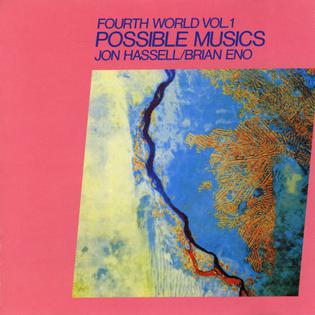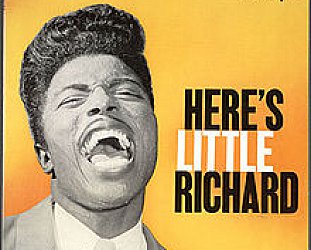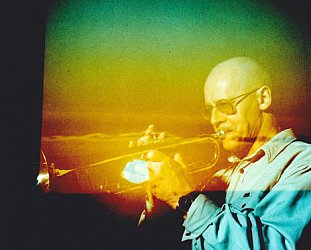Graham Reid | | 2 min read
Jon Hassell

When I imported this album in 1981 it was on the basis of faith: faith that the Melody Maker writer who had hailed it was on the money, that Brian Eno who appeared as a collaborator and on whose EG Music imprint it appeared was right, that it would be as good as their previous collaboration . . . and that it would arrive intact.
My faith was vindicated on all counts and the album has proved a cornerstone of my music collection -- aside from early reservations about the fey pretentions of the title.
And the veiled suggestions in some quarters at the time of ethnic exploitation (accusations of "cultural imperialism" were just around the corner when world music took off) because Jon Hassell had used a sample of the Semelai people of Malaya making a water-splash rhythm as the sonic bed for one track.
This was a new kind of ambient music, one that owed much to the microtones of Indian music (Hassell had studied with Pandit Pran Nath) and absolutely nothing to the western tradition of trumpet playing. Hassell would blow across his mouthpiece to set up a breathy, almost wind-swept, sound and the long lines he created had an atmospheric quality.
With pottery drums and gongs (Daniel Lanois was in on the act also), Dream Theory in Malaya referred to the music of that region but never explicitly. It had its own other-world quality and in fact he and Eno had called their first album together Possible Musics: Fourth World Music Vol 1. This was volume two.
 Possible Musics established a kind of ethno-ambient electronica territory long before one even existed, and to be fair, it should be included here as an Essential Elsewhere companion to Dream Theory.
Possible Musics established a kind of ethno-ambient electronica territory long before one even existed, and to be fair, it should be included here as an Essential Elsewhere companion to Dream Theory.
But Dream Theory extended the contract even further and became, in many places, just plain weird and beyond description: the music floats around as if defying gravity, such percussion as there is (bells, tuned gongs, splashing) is exotic and unexpected, the trumpet lines flow and extend into space unconstrained, there is reference to melodic and rhythmic minimalism and trance music . . .
Eno typically did a lot of theorising about all this, as did Hassell. The album title and concept apparently comes from a paper by the anthropologist Kilton Stewart who visited some Malayan tribes people in the mid Thirties who had a custom of dream-telling in the morning. That tended to put far too many people (sniffy critics included) off.
But you can simply forget all that and let yourself be transported by the airy music, the washes of sound, the pastel colours it invokes, and the sense of being outside ordinary consciousness.
There are very few albums you can say that about, this remarkable and largely overlooked marriage of soul and intellect is one of them.
.
Hassell -- who died in July 2021 at age 84 -- made many beguiling albums, check out his 2009 release Last Night the Moon Came, at Music From Elsewhere.
These Essential Elsewhere pages deliberately point to albums which you might not have thought of, or have even heard . . .
Jump in.
The deep end won't be out of your depth . . .







post a comment